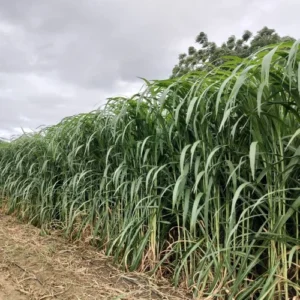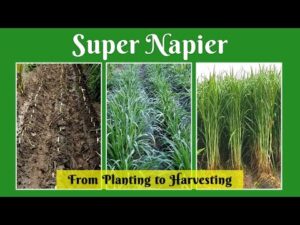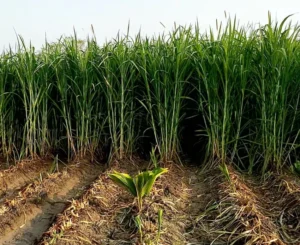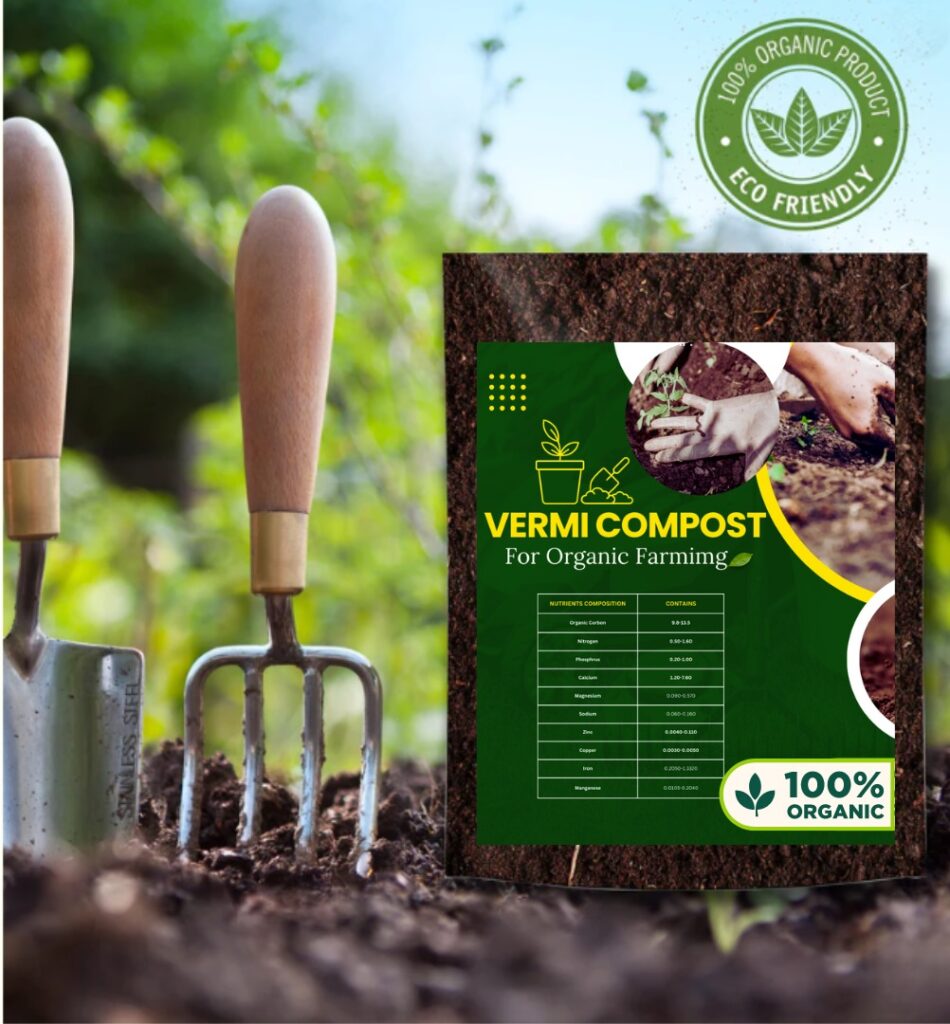What is Super Napier grass?
Super Napier Grass is fed to cattle and sheep. Elephant Grass and Pearl Millet were crossed to create the Hybrid Napier Grass known as Super Nepier. Napier grass is an enhanced fodder grass that yields a lot of forage with a high protein content. Super Napier grass offers a high yield and 16% to 18% of proteins.

The advantageous features of the Super Napier grass:
- Super Napier grass yield is 180 to 200 tonnes per acre annually.
- Most extensive leaf size. Broad (6–8 cm) leaves are present.
- Reaches a height of considerable 400–500 cm.
- The leaf count per pitch ranges from 400 to 450.
- The leaves are tall and crisp.
- High leaf stem rate.
- Durers (25–30 punches), slanted.
- 8 times a year are dedicated to crop harvesting.
- The production of high yields takes place quickly.
- On low terrain, very good yields occur.
- Nearby nodes are susceptible to rapid root growth.
What are the various ways in which Super Napier grass can be used?
The super Napier grass can be utilized in many ways:
- The primary use of Napier grass is as a fodder crop. It can be converted into hay or silage or utilized as direct feed for the cattle.
- Elephant grass is the name given to it in African nations where it is used as an elephant feed.
- The Napier Plant is crucial to the creation of biomass.
- Additionally, it has a 6-harvest limit per year. As a result, it serves as an excellent raw material for the production of biofuel.
- In order to increase the fertility of the soil and reduce soil erosion, Napier grass is planted on marginal slopes and areas.
- In many areas of the nation, napier grass serves as the main raw material for making paper.
- In the pest management technique, Napier grass is employed as a pull crop that entices pests to emerge from the plant. This is especially important for plants like maize as part of their pest management approach.
- Young Napier grass shoots and leaves are used to prepare soups and stews, and they are also thought to be edible.

The essential requirements to grow Super Napier grass has been elaborated as follows
Seeds/cuttings which will give better yield of super Napier grass can be described as:
In order to get a satisfactory yield, the chosen cuttings or seeds must possess at least two nodes. These cuttings are typically white-yellowish in color and 15 to 20 cm long.
Temperature which supports the growth of Super Napier grass can be explained as follows:
Despite the fact that Napier grass is perennial and flourishes in all four seasons, it is nonetheless impacted by the brisk shift in the seasons.
Although Napier grass can often grow in temperatures between 10 and 33 degrees Celsius, other factors, such as an abrupt shift in the season, can also have an impact on the plant’s growth.
The kind of soil in which the Super Napier grass variety grows best is described in the following paragraph:
Napier grass may flourish in a wide range of soil types. The growth of Napier grass is not particularly fostered by heavy soils; instead, light loamy and sandy soils are recommended. At the roots, moist soil is ideal, but you must make sure it is not stagnant. In areas that are frequently flooded and have standing water, Napier grass cannot survive. The soils that are fertile and rich in nutrients and organic matter produce very good yields. To grow Napier grass, the pH of the soil should be between 5 and 8.
How to sow the Super Napier grass seeds after purchase?
The seeds should be planted in a nursery bed or pot with well-drained soil. Until they germinate, give the seeds regular waterings and keep them moist. Transplant the seedlings into separate bags or pots once they are big enough to handle. Until they are ready to be planted out into their permanent site, grow the seedlings in a warm, protected environment. When sowing super Napier grass, pick a location with good soil drainage and sunlight.
Plants should be spaced 1-2 meters apart. Regularly water your plants during dry spells, and fertilize once a month with a high-nitrogen fertilizer, like composted green waste or chicken manure. Every 6 to 8 weeks through the growing season, cut those plants back to the ground to promote new growth and keep them from becoming too lanky
.
FAQs
1.How nutrient-dense is Super Napier grass?
Ans. It has 26-28% crude fiber and 8–12% crude protein. The range of the total digestible nutrition is 55–58%.
2.What is the super Napier grass price per kg?
Ans. To know more about Super Napier grass seed contact us at https://khetkidawai.com/



